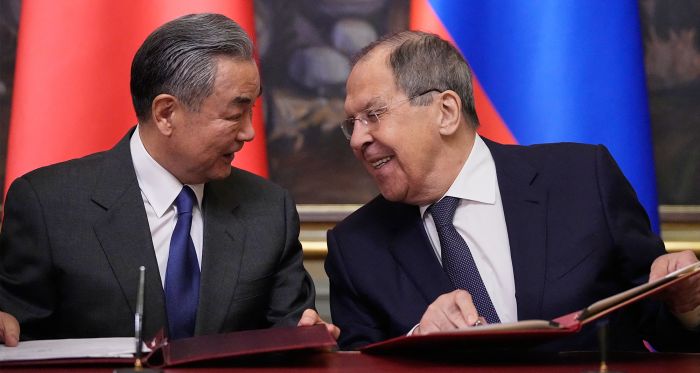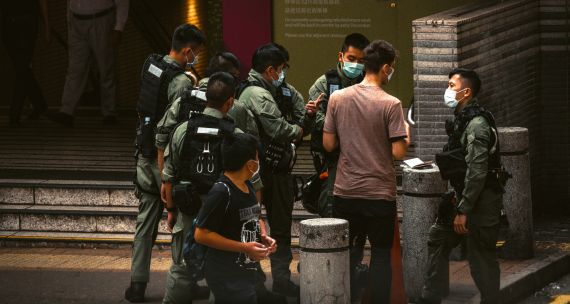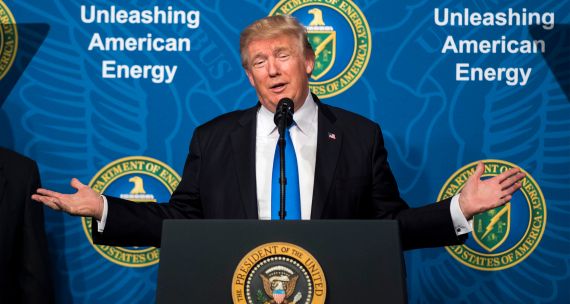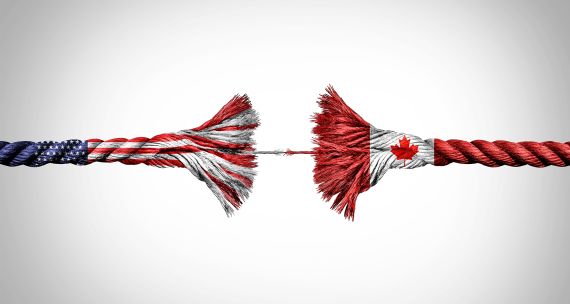The Takeaway
On April 2 — just before the U.S. announced sweeping new tariffs on much of the world — Chinese Foreign Minister Wang Yi concluded a three-day visit to Moscow, where he met with his counterpart, Sergey Lavrov, and Russian President Vladimir Putin. The two sides discussed the Russia-Ukraine war and other security flashpoints, including Iran’s nuclear program and the Korean Peninsula. The tone and tenor of statements from both sides cast serious doubts about U.S. President Donald Trump's ability to drive a wedge between China and Russia, undermining the viability of the so-called “reverse Kissinger” strategy — designed to weaken China geopolitically by luring Moscow away from Beijing’s orbit.
In Brief
- Wang’s visit was the highest-level in-person engagement between Beijing and Moscow since Trump returned to the presidency in January and initiated a thaw in U.S.-Russia relations. The main purpose of Wang’s visit was to prepare the agenda for a Moscow summit between Putin and Chinese President Xi Jinping in May.
- In a post-visit summary posted on the Chinese Ministry of Foreign Affairs website, Wang laid out three major goals driving the China-Russia relationship:
- strengthening economic and energy co-operation;
- sharing innovation and deepening industrial integration, and,
- boosting global development, including by synergizing China’s Belt and Road Initiative with the Russia-led Eurasian Economic Union and co-operating on stabilizing global industrial and supply chains.
- Wang also reiterated China’s readiness to play a role in resolving the Russia-Ukraine war, adding that any peace agreement must be binding and acceptable to the relevant parties. Beijing has made this offer repeatedly since Russia’s full-scale invasion of Ukraine in February 2022, but the offer has been received with skepticism in Kyiv and other European capitals due to China’s closeness with Russia.
Implications
The ‘reverse Kissinger’ scenario is a non-starter. The underlying premise of this scenario is flawed. In the early 1970s, then-U.S. national security advisor Henry Kissinger and U.S. President Richard Nixon were able to exploit a mutual animus and suspicion that had driven Beijing and Moscow apart. Today, the Beijing-Moscow relationship is robust — and increasingly so, including in the Indo-Pacific region. For example, in 2024, their militaries conducted “massive naval and air drills” across a wide swath of the North Pacific. In addition, Russia, which is increasingly active in Southeast Asia on economic and security matters, has expressed support for Beijing’s position on contentious regional issues such as Taiwan and the South China Sea.
Under former U.S. president Joe Biden, China’s “friendship without limits” with Russia was a major point of tension between the U.S. and China. An American policy that is more favourable toward Moscow largely eliminates that point of tension. If anything, an improvement in the U.S.-Russia relationship gives Beijing greater diplomatic space. Wang Yi himself reflected that belief, saying that China welcomed the normalization of U.S.-Russia relations as it could help to stabilize the balance of power among the world’s major powers.
China’s ‘forever friendship’ with Russia could complicate its European charm offensive. For months, China has been trying to woo Europe in anticipation of hostile U.S. trade action. On the one hand, these efforts may be helped along by the new Trump tariffs: 20 per cent on the EU and, as of April 9, at least 104per cent (on top of existing tariffs) on China. As both markets seek new customers for their products, they will naturally look to each other: Europe is the world’s second-largest consumer market (behind the U.S.), and China is the third largest.
On the other hand, China’s courting of Europe could face headwinds. Maros Sefcovic, the EU’s trade and economic security commissioner, has emphasized that investment and trade flows between the two need to be “symmetrical” — an outcome that seems unlikely if one of China’s strategies for coping with economic pressure is to flood other markets with its exports. In addition, the Ukraine issue — specifically, China’s support for Russia’s war efforts — may not be so easily separable from purely economic matters in the minds of many European leaders.
What’s Next
1. Russia-China relationship set for boost with Xi’s upcoming visit
The occasion for Xi’s visit is Russia’s May 9 Victory Day celebrations — the holiday commemorating the victory of the Soviet Union over Nazi Germany in the Second World War. Xi will be a guest of honour at a time when international favourability toward the U.S. has plummeted. Xi and Putin can capitalize on that sentiment to strengthen their appeals to both U.S. allies and members of the ‘Global South,’ neither of which have been spared in Trump’s tariff onslaught.
2. A role for Canada, China in Ukraine peacekeeping?
While an end to the Russia-Ukraine war currently feels remote, some European leaders are beginning to discuss a post-war “coalition of the willing” peacekeeping mission — one that could involve Canada. In recent months, the possibility of China participating in such a mission has been floated, including by U.S. Vice President JD Vance in a high-profile public forum. The rationale behind the proposal is that Russia would reject NATO members being engaged in such a mission but might be more receptive if the peacekeepers are not non-Western.
However, in late March, China denied it was considering such a role. As one Chinese analyst theorized, Beijing will want to avoid becoming militarily entangled in what Moscow indisputably views as its sphere of influence. While Kyiv has little trust in Beijing because of the various ways it props up Putin’s war effort, it might concede to the presence of Chinese peacekeepers if it feels it has few other viable options.
• Edited by Ted Fraser, Senior Editor, APF Canada






